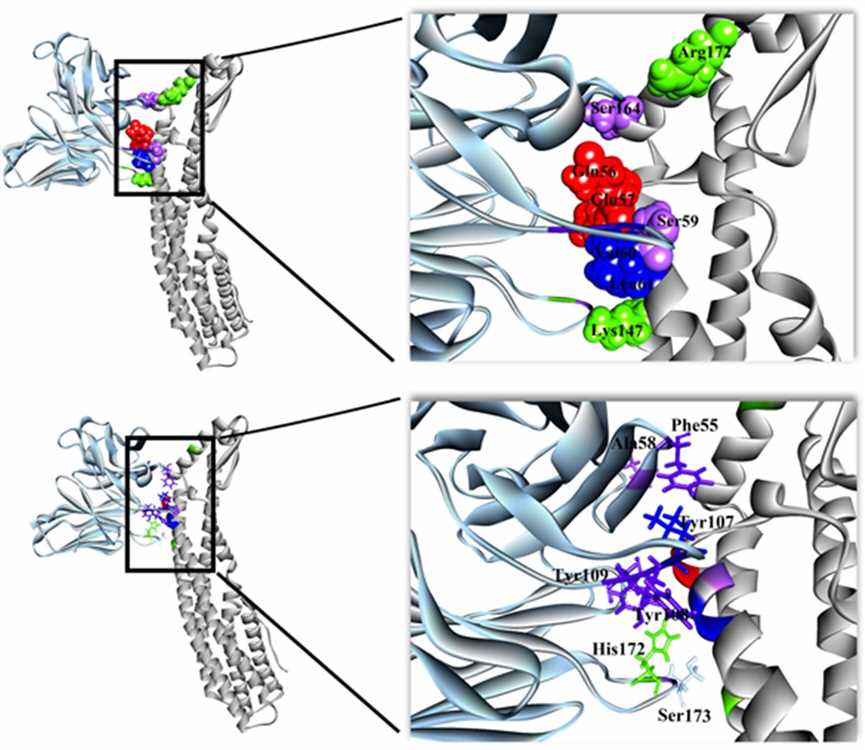Epitope mapping aims at identifying the binding sites of antibodies on their target antigens. It has become increasingly important in many immunological applications, including the discovery and development of new vaccines and antibody drugs. With skills and knowledge on epitope mapping, Creative Biolabs provides B cell epitope mapping services specializing in conformational and linear B-Cell epitopes.
B cells are considered to be a core component of the adaptive immune system because they provide long-term protection against infectious pathogens. They perform these functions by producing antibodies that recognize their molecular target (called antigen) by binding to a part of it (called epitope) in a highly selective manner. Thus, epitopes are binding areas on antigens. B cell epitopes are classified into two categories: linear (continuous or sequential) and conformational (nonlinear or discontinuous) epitopes. The linear B cell epitopes are made up of contiguous stretch of amino acids in antigen, whereas conformational B cell epitopes constitute the spatially folded amino acids, which lie far away in the protein sequence. 10% of the epitopes belong to the linear table, and 90% of the epitopes belong to the conformational epitope. Although the majority of B cell epitopes are conformational, most of them are composed of 1–5 linear stretches.
 Fig.1 B cell epitope.
Fig.1 B cell epitope.
Conformational B-cell epitopes have been studied extensively due to their immunological applications, such as peptide-based vaccine development, antibody production, and disease diagnosis and therapy. Epitope mapping of an antibody will greatly facilitate antibody drug discovery and design. Experimental epitope mapping can be generally divided into structural and functional studies.

Creative Biolabs' dedicated immunologists and excellent teams can add real value to your research projects. Contact us to discuss your project and we will design an assay tailored to achieve your objectives.
Other optional CreMap™ B cell epitope mapping services:
 Fig. 2 Structural analysis of HlyE conformational epitope. (Chai Fung Chin, 2017)
Fig. 2 Structural analysis of HlyE conformational epitope. (Chai Fung Chin, 2017)
The study focused on identifying conformational B-cell epitopes of the HlyE toxin from Salmonella enterica serovar Typhi (S. Typhi) using the phage display technique. This research elucidates potential immunogenic regions on HlyE that could be targeted for vaccine development against typhoid fever. The application of conformational B cell epitope mapping in this study involved using a 20-mer random peptide library to biopan enriched polyclonal antibodies from typhoid patient sera. The peptides that bound to the antibodies were sequenced, and bioinformatic tools helped predict and validate the conformational epitopes on HlyE. These epitopes were confirmed through binding assays, providing a foundation for developing targeted interventions against Salmonella Typhi.
Conformational B cell epitope mapping is a technique used to identify the specific three-dimensional regions of an antigen that are recognized by B cell antibodies. These epitopes are formed by amino acid residues that are brought together in the folded structure of the protein, rather than by a continuous linear sequence. This mapping is essential for understanding complex immune responses and designing effective vaccines and therapeutic antibodies.
Conformational B cell epitope mapping typically involves techniques such as X-ray crystallography, cryo-electron microscopy, or nuclear magnetic resonance (NMR) spectroscopy. These methods allow researchers to determine the three-dimensional structure of antigen-antibody complexes. Additionally, techniques like hydrogen-deuterium exchange mass spectrometry (HDX-MS) and mutagenesis can identify regions of the antigen that interact with antibodies, providing insights into conformational epitopes.
Conformational B cell epitope mapping has the ability to identify epitopes that depend on the protein's three-dimensional structure. This method provides a more comprehensive understanding of antibody-antigen interactions, which is crucial for designing vaccines and therapeutics that target complex epitopes. It also helps in identifying epitopes that are not accessible in linear mapping, offering a more complete picture of immune recognition.
Conformational B cell epitope mapping is beneficial for vaccine development, therapeutic antibody design, and understanding autoimmune diseases. It aids in identifying immunogenic regions of pathogens that are crucial for eliciting an immune response. This technique is also valuable in studying antibody specificity and cross-reactivity, which is important for developing targeted therapies and diagnostics.
Conformational B cell epitope mapping contributes to vaccine development by identifying the three-dimensional regions of antigens that are most effective in eliciting an immune response. By targeting these conformational epitopes, researchers can design vaccines that mimic the natural structure of the pathogen, leading to more robust and protective immune responses. This approach helps in creating vaccines with higher efficacy and safety profiles.
Conformational B cell epitope mapping can be more complex and time-consuming than linear epitope mapping, as it requires detailed structural information about the antigen-antibody complexes. Techniques such as X-ray crystallography and cryo-EM can be expensive and require specialized equipment and expertise. Additionally, conformational mapping may not always identify linear epitopes, necessitating a combination of both methods for comprehensive epitope identification.
Conformational B cell epitope mapping can identify the three-dimensional regions within antigens that are targeted by antibodies. This detailed information helps elucidate the mechanisms of immune recognition, antibody specificity, and cross-reactivity. It provides insights into the structural basis of immune responses, aiding in the design of effective vaccines and immunotherapies that mimic natural antigenic structures.
Use the resources in our library to help you understand your options and make critical decisions for your study.
All listed services and products are For Research Use Only. Do Not use in any diagnostic or therapeutic applications.
| USA:
Europe: Germany: |
|
|
Call us at: USA: UK: Germany: |
|
|
Fax:
|
|
| Email: info@creative-biolabs.com |
